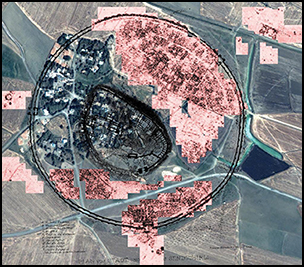Crossref Citations
This article has been cited by the following publications. This list is generated based on data provided by
Crossref.
Herrmann, Virginia R.
2017.
Urban organization under empire: Iron Age Sam’al (Zincirli, Turkey) from royal to provincial capital.
Levant,
Vol. 49,
Issue. 3,
p.
284.
Welton, Lynn
Harrison, Timothy
Batiuk, Stephen
Ünlü, Elif
Janeway, Brian
Karakaya, Doǧa
Lipovitch, David
Lumb, David
and
Roames, James
2019.
Shifting Networks and Community Identity at Tell Tayinat in the Iron I (ca. 12th to Mid 10th Century B.C.E.).
American Journal of Archaeology,
Vol. 123,
Issue. 2,
p.
291.
Kertai, David
2019.
Architectural Assemblages: The Northwest Complex at Zincirli.
Cambridge Archaeological Journal,
Vol. 29,
Issue. 1,
p.
81.
Osborne, James F.
Harrison, Timothy P.
Batiuk, Stephen
Welton, Lynn
Dessel, J. P.
Denel, Elif
and
Demirci, Özge
2019.
Urban Built Environments in Early 1st Millennium b.c.e. Syro-Anatolia: Results of the Tayinat Archaeological Project, 2004–2016.
Bulletin of the American Schools of Oriental Research,
Vol. 382,
Issue. ,
p.
261.
Sollee, Alexander E.
Mönninghoff, Hannah
Kozal, Ekin
Karakaya, Doğa
Heim, Joëlle
and
Gür, Selin
2020.
The Development of the Southeast Lower Town of Sirkeli Höyük.
Altorientalische Forschungen,
Vol. 47,
Issue. 2,
p.
215.
Manning, Sturt W.
Lorentzen, Brita
Welton, Lynn
Batiuk, Stephen
Harrison, Timothy P.
and
Petraglia, Michael D.
2020.
Beyond megadrought and collapse in the Northern Levant: The chronology of Tell Tayinat and two historical inflection episodes, around 4.2ka BP, and following 3.2ka BP.
PLOS ONE,
Vol. 15,
Issue. 10,
p.
e0240799.
Rosenswig, Robert M.
2021.
Reconstructing Sovereignty on Ancient Mesoamerica's Southern Pacific Coast.
American Anthropologist,
Vol. 123,
Issue. 2,
p.
370.
Sollee, Alexander E.
2023.
:Die Zitadelle von Dūr-Katlimmu in mittel- und neuassyrischer Zeit. Teil 1: Text. Teil 2: Katalog. Teil 3: Kassette mit 57 Farbtafeln und Faltplänen.
Journal of Near Eastern Studies,
Vol. 82,
Issue. 2,
p.
356.
Creamer, Petra M.
Alperstein, Jonathan
Massa, Michele
Osborne, James
and
Casana, Jesse
2024.
Magnetic Gradiometry Survey at the Urban Centre of Türkmen‐Karahöyük (Turkey).
Archaeological Prospection,



